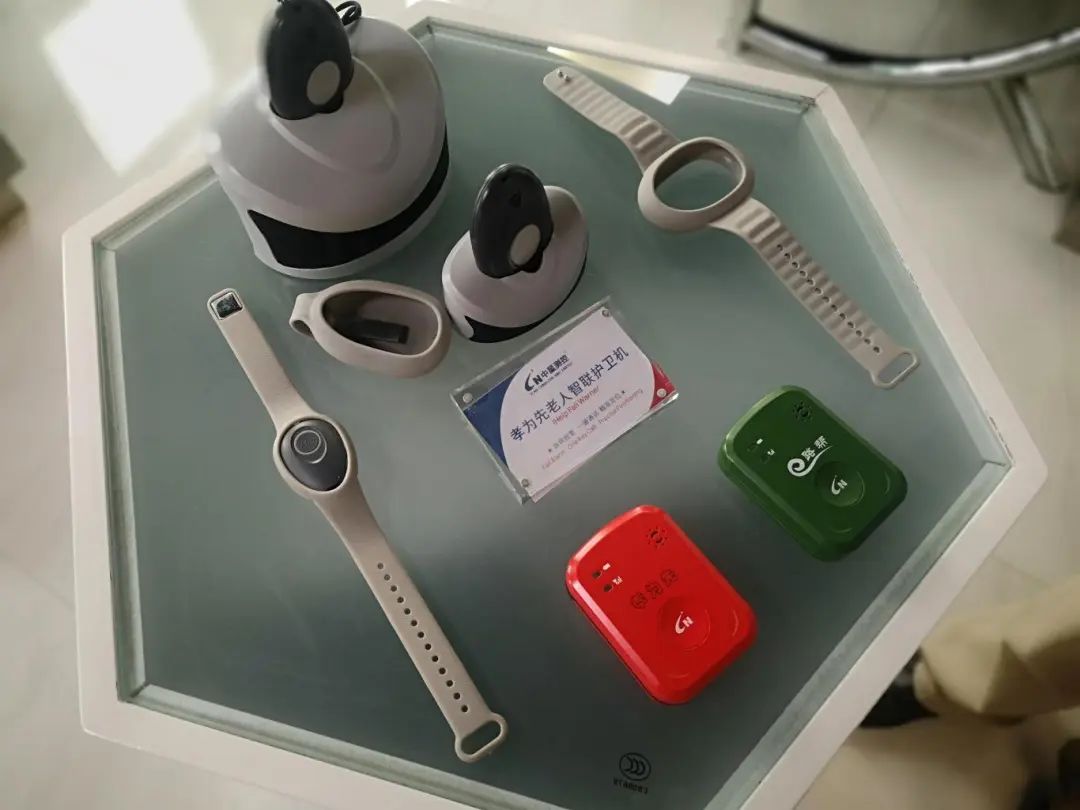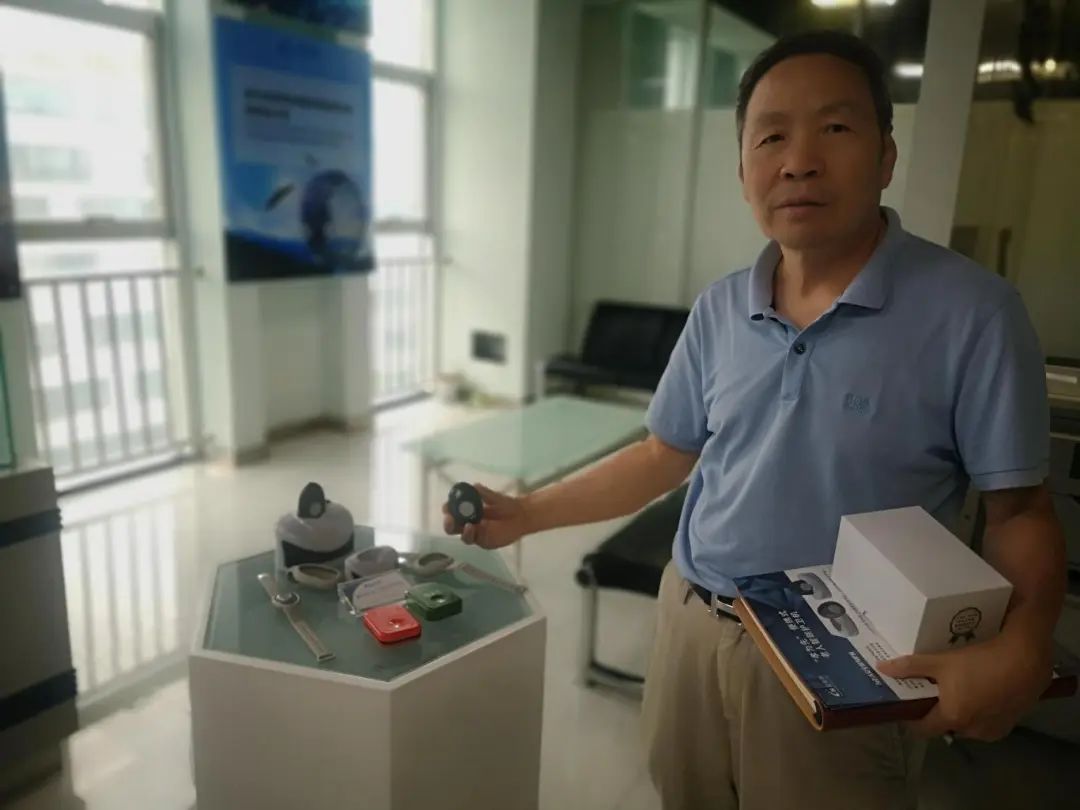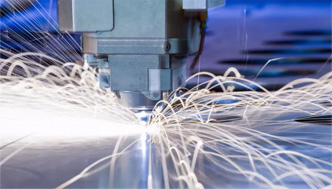In recent years, with the continuous launch of new smart elderly care products, enterprises, elderly care service institutions, communities and other entities have been venturing into smart elderly care. By empowering the lives of the elderly through technology, they help every senior citizen live a fulfilling life with happiness and support.
In Xi'an, smart elderly care is gradually transforming from a concept into reality, bringing many conveniences to the lives of the elderly and quietly changing the lives of many seniors. However, some products face numerous challenges in the process of promotion and use.

Mobile Personal Emergency Response System Safeguards Elderly's Safety
Xi'an Chinastar M&C Co., Ltd., which has long been dedicated to the R&D and manufacturing of intelligent sensors, intelligent terminals and IoT technologies, is a well-known professional manufacturer of various intelligent sensors and an integrated IoT solution provider in China and even globally. Among the many products in the company's exhibition hall, a small and delicate "iHelp" Mobile Personal Emergency Response System has been applied in many families, elderly care institutions and communities.
Gu Rongxiang, the general manager of the company, introduced while demonstrating: "The product has now been upgraded to the third generation, weighing about 40 grams. It can be hung around the elderly's neck or on a belt. If an elderly person falls, it can automatically send a signal to their children's mobile phones or the platform within 30 seconds without any operation, promptly notifying the children and caregivers so that the elderly can get help immediately." Reporters learned that based on sensor integration, combined with intelligent algorithms, wireless communication and APP technology, this anti-fall device for the elderly, developed by the company in 2012, has functions such as one-key hands-free calling, electronic fencing, status query, anti-harassment calls and medication reminders, with a battery life of 60 to 72 hours.

The intelligent guardian device for the elderly mentioned by Gu Rongxiang is commonly known as an elderly fall alarm. "At first, I really couldn't accept it. I always felt like I was being monitored, with no privacy, and I also found it troublesome. Later, to let my children work at ease and worry less about me, I tried it. Now I'm used to it and can't do without it," said Mr. Yu, a citizen with mild cerebral infarction.
Currently, the digital wave has brought many conveniences to people's daily lives, but promoting smart elderly care products is not an easy task. "In our promotion of elderly products, some elderly people receive free gifts like eggs and towels, but when they hear they need to spend money, they are reluctant to buy. Basically, it's the children who place orders. So the cognitive issue of some elderly people needs to be addressed," said Wang Lin, who is engaged in business promotion.
"The main reason is that most elderly people are not interested. Some buy the products but don't carry them around. Moreover, many people think they are in good health and won't fall," Gu Rongxiang said. The company conducted a special survey and found that the rate of fall-induced disability is very high. Due to many people's lack of understanding of the product and issues such as product promotion costs, this high-tech product with Chinese and US patents faces many challenges. For example, in terms of funds, with the development of the silver economy, the market's diverse demands are growing. In the future, smart elderly care products will definitely gradually become a necessity. Elderly fall alarms and other products also need to be iterated and upgraded, and the first bottleneck is funding. As an enterprise, they are trying their best to find solutions. He hopes that the government will provide policy support in terms of taxation, support the R&D of elderly products, and support the development of wearable devices and intelligent terminal products with both promotable and effective smart elderly care scenarios, so that technology can truly benefit every elderly person.
Solving Care Challenges: Launching Robot-Enabled Elderly Care
Reporters learned that the Shaanxi Provincial Department of Industry and Information Technology and the Shaanxi Provincial Department of Civil Affairs recently jointly issued a notice, organizing relevant units to apply for paired research on intelligent elderly care service robots and scenario applications, and launching a 3-year pilot project.
The pilot project plans, from 2025 to 2027, to focus on improving the quality of life of the elderly, alleviating the pressure of family elderly care, making up for the shortage of human resources in institutional and community elderly care services, and promoting the improvement of the elderly care service system. It will implement a number of intelligent elderly care service robot research and application pilot projects in stages, promote paired research between R&D and application parties, promote the application verification, iteration and upgrading of products in scenarios such as families, communities and elderly care institutions, develop a batch of robot products that can meet multi-level and diversified elderly care service needs, continuously establish and improve standards, specifications and evaluation systems, and accelerate the development of robot-empowered smart elderly care services and the silver economy.
The pilot content covers several key areas: First, conducting paired research. Focusing on three types of elderly care services - home-based, community-based and institutional care, and centering on application scenarios such as care for the disabled and dementia, emotional companionship, health promotion, smart environment and daily life assistance, it will carry out paired R&D and application research targeting the pain points in actual user scenarios, and gradually improve the safety, reliability, usability and service capabilities of products.
Second, carrying out scenario application verification. Pilot applications will be conducted in families, communities and elderly care institutions. Product iteration and upgrading will be completed during the application verification, which will last no less than 6 months. Home-based elderly care service robot products need to complete application verification in no less than 200 households and deploy no less than 200 sets; community and institutional elderly care service robot products need to complete application verification in no less than 20 communities or 20 elderly care institutions and deploy no less than 20 sets.
Third, improving standards and evaluation systems. Encourage product developers and application pilot units to jointly carry out research on standards for intelligent elderly care service robots, develop product and service standards and specifications for intelligent elderly care service robots focusing on scenario needs and application safety, and develop product evaluation standards focusing on safety, reliability, aging-friendliness and economy. Guide the industry to closely align with the physiological and psychological characteristics and service needs of the elderly in the design and development of intelligent elderly care service robot products, and improve the aging-friendliness, intelligence, safety and reliability of products.
Source: Qin News











 Release Date:2025-07-24
Release Date:2025-07-24  Click on the quantity:361
Click on the quantity:361



